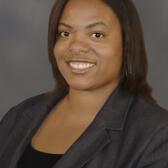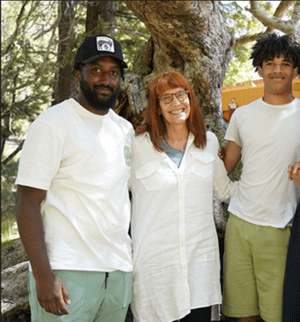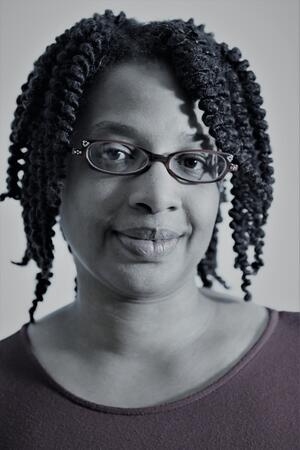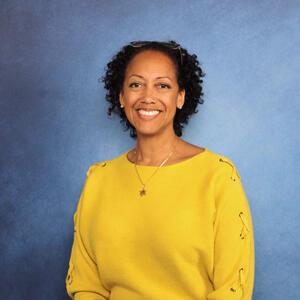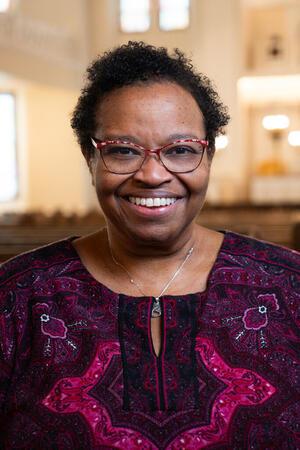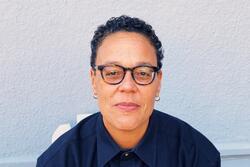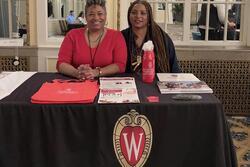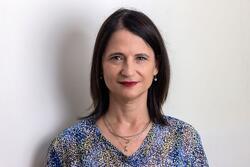Creating Belonging for Black Jews
Being both Black and Jewish in America often means being situationally “othered” in every possible context. Synagogues, summer camps, and the like often fail to recognize the needs and perspectives of Black Jews as a matter of routine. In a survey conducted by the Jews of Color Initiative, 80% of respondents said they had discrimination in Jewish settings.
While Jewish communities affiliated with liberal movements tend to love outreach to Black communities, they typically avoid having any such discussion with their own Black members. Mainstream Jewish institutions will ignore Jews of color, but create affinity spaces based on sex and age group without a second thought, because the benefits are obvious. Jewish summer camps will bask in reverent discussions about which gender pronoun each person uses while avoiding all mentions of their transracially adopted families. (I had a front row seat to several such sanctimonious ceremonies during a stint at a Jewish camp last summer.)
On the positive side, there are institutions serving Jews of color that are getting a lot of things right and are particularly beloved by Black American Jews.
In talking with the founders of these institutions, I heard several common refrains. Each said the going was slow, and that there were far more Jews who wanted to participate in the programs than their available resources would allow. All of these organizations are pluralistic and non-denominational, established for all Jews of color. These organizations are creating community and providing enriching life experiences that ease the isolation many Black Jews endure.
Camp Be’chol Lashon is a Jewish summer camp one hour north of San Francisco, founded by Diane Tobin in 2009. The camp specializes in programming that connects campers ages 8 and up to Jewish cultures from around the world. Most of the current staff are former campers.
Tobin was inspired by her Black son, Jonah, whom she adopted in 1997, to visit and learn about Jewish communities around the world and build awareness that Jews are a global people. (The name Be’chol Lashon means “in every language” in Hebrew.) What started as weekend retreats grew into a full-service summer camp that now hosts 80 campers, most of whom are Black or biracial. Campers come from all over the US, and some even from overseas.
“At camp, they see that there are Black Jews in Uganda," Tobin said. "Kids now say, ‘I’m not the only Black Jew, even if I am in my synagogue or day school or JCC.’” Camp Be’chol Lashon emphasizes leadership through public speaking and gives campers the opportunity to share their cultural identity. “At some point in life, each of these kids is going to be asked to talk about their Judaism and tell their story,” Tobin said. This is especially powerful for Jewish kids of color from transracially adopted families, who often receive the message that they should keep quiet about the elephant in the room.
Campers enjoy typical camp activities like gaga, kayaking, and art alongside Jewish songs and Shabbat celebrations. The rolling hills of Sonoma County provide the perfect backdrop for Be’chol Lashon’s innovative Passport to Peoplehood program, where campers “visit” far-flung Jewish communities through music and traditions. Hebrew blessings are sung before kosher-style meals as well as during the Saturday morning prayers led by both campers and counselors.
Jews of Color Sanctuary is a Cincinnati-based nonprofit focused on building relationships and spiritual empowerment for Jews of color. Program participants engage in Hebrew text study and conversations about their life experiences. Jews of Color Sanctuary is a non-denominational project that embraces diverse schools of Jewish thought. While most events are online, founder Erica Riddick also creates in-person events in partnership with other organizations. “I have conversations with Jewish people of color, and they are yearning for this connection,” Riddick said.
Community members who are under-resourced have not been able to participate to the extent they want and need to. “They have seen how beneficial it can be, but they are trying to juggle everything,” Riddick said. Resources like childcare and transportation affect the ability of Jews of color to engage fully in the events and programming. Riddick’s journey to fund the project and raise the organization’s profile has been demanding. She feels she doesn't have the same access to resources, like fellowships and support groups, that other organizations do. “Black-led organizations have always had to create alternatives and figure out how to do things outside of the support systems," she said.
Many Jews of color have had their legitimacy as Jews challenged and may even avoid attending events for Jews of color or labeling themselves that way, even as they yearn for these affirming spaces. Jews of Color Sanctuary has created an environment that encourages each Jew of color to develop a bespoke connection to the Jewish tradition that nourishes their soul, without regard to external validation. “The affinity space turns down the noise so we can focus on what you really think and feel. I want Jewish people of color to feel connected and empowered and joyful. I’m pouring my passion into this,” Riddick said.
Khazbar is a project founded by Tamara Fish and Sabrina Sojourner. Inspired by the word casbah, Khazbar offers social events for Jews of color in addition to training, seminars, and consulting to Jewish institutions looking to fully embrace their community members of color. In keeping with the nomadic feel of their name, Khazbar’s tagline is “An Oasis in Deserts of Jewish Diversity for Jews of Color and Serious Allies.” Khazbar is a managed project of Bend the Arc, which provides organizational support and fiscal sponsorship while honoring Fish and Sojourner’s original vision.
“We knew we wanted to do DEI work in a different way. As educators, we wanted to teach in a way that participants could really hear and absorb the material,” Fish said. During DEI training, participants objectively critique a culture that has reproduced broad social inequities and engage in self-reflection. Through discussions with her white participants, she discerned that their defensive reactions to the material were driven by trauma.
Sojourner and Fish are embarking on an edgy Jewish print media project, Gershom. The periodical will publish artists’ images, topical articles, Torah commentaries, op-eds and short stories from Jewish creators of color. “In Black culture, whether it’s having fun, whether it’s arguing—our conversations are intense. But the framework of family and community holds us together. We will let ourselves be who we are in the space,” Fish said.
Mainstream Jewish media tends to cluster around either discrimination battle stories or racial exoticism when it comes to Black Jews. Fish wants to expand this range inside the pages of Gershom. “Our perspectives on things are so beautiful, if we don’t write it, it’s not going to get out there because of the gatekeepers. These will be the stories that we always wanted to write, stories that aren’t all about white people understanding us. What would we write? What would we create?”
“I started a not-for-profit by mistake,” said Dr. Harriet Wimms of her beloved organization, Jews of Color Mishpacha Project. Years ago, she attended her first Jews of color event in Baltimore. Looking around at the crowd, she had an epiphany: the group was like a long-lost family. After several successful online events, she created the flagship in-person event of her project, the “We Are Family” Shabbaton, named after the 1970’s hit song by Sister Sledge. It feels like a BIPOC family reunion.
At the Shabbaton, there’s programming for every age group and kosher food and provisions for traditional Shabbat observance are readily available. There are both egalitarian and Orthodox prayer spaces. “The goal is to create a pluralistic Jewish experience that really helps people feel less alone. Each person feels there is a place for them in the Jewish world,” Wimms said.
The Shabbaton offers sessions for both religious and secular Jews of color as well as sessions for people who identify as allies of Jews of color. No matter one’s disabilities or allergies or family structure, all Jews of color are welcomed and accommodated. The next one will be held August 8-10 at Pearlstone Retreat Center.
“It is amazing to be leading services and to look out on the congregation and see mostly Black and brown folks. People say they wait all year for the Shabbaton. It’s a place where they actually get to feel at home,” Wimms said. For far too many Jews of color, being embraced in a Jewish space happens but once a year. Wanting to hold on to the moment a bit longer, Wimms heard an attendee say, “Take this in, because when you go to shul next week, it’s going to feel different. Remember this beautiful space.”
Before I started researching this article, I was torn between focusing on institutions specifically for Jews of color, as opposed to mainstream Jewish institutions working to become more inclusive of them. In the end, I decided to focus on the former. While sincere reform efforts by mainstream Jewish organizations are essential, there is simply no replacement for institutions that specialize in outreach to Jews of color, and their success speaks to that. This is especially true for institutions that offer children’s programming. It’s impossible to imagine that even the most well-trained staff at a typical Jewish summer camp are going to approximate the quiet kinship felt by Jewish kids of color around the campfire at Camp Be'chol Lashon. Or replicate the awakening that a girl at the “We Are Family” Shabbaton experiences the first time she has to carefully scan the room full of brown faces to see which one of the many is her dad. The idea that the next generation of Jews of color will feel at home in their Jewish identities fills me with hope.
Of course, all Jewish institutions play a crucial role in healing the divides among our people. It might surprise readers to hear that some Black Jews will actually call a new synagogue they are visiting ahead of time to let them know that a Black person is coming. May it be so that at a minimum, your synagogue or JCC or community event will do the work to welcome all Jews with open arms. Ken yehi ratzon.

